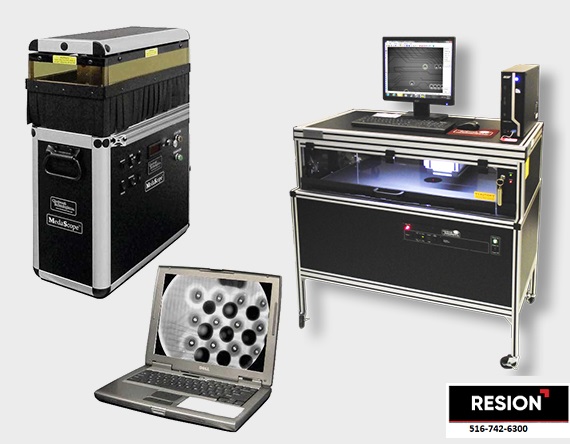In the current fast-paced and cutthroat business world, ensuring product safety is a significant priority. Manufacturers are required to comply with stringent safety standards and simultaneously strive to offer top-notch merchandise.
In this regard, X-ray inspection systems have become crucial tools for ensuring the safety of products in a variety of industries. These systems allow producers to spot potential flaws, impurities, or foreign objects that can compromise the quality of their products by harnessing the power of cutting-edge imaging technology.
X-ray inspection testing ensures consumer safety and enforces industry rules for anything from food and medicines to electronics and automotive parts.
In this post, we’ll examine the crucial part X-ray inspection systems play in assuring the safety of products and offer advice on how to choose one before making a purchase.
The following are some crucial fields where X-ray inspection technologies are used:
Contaminant Detection-
It is common practice to employ X-ray inspection equipment to find physical pollutants in food, medicine, and other consumer items. These pollutants may accidentally enter the product during the production or packaging procedures and include metal, glass, stone, plastic, or bone fragments. X-ray inspection systems play a crucial role in safeguarding consumer health and improving product quality by detecting and removing contaminated items.
Quality Control–
X-ray inspection devices support quality control by examining the integrity of the product and its adherence to specifications. They can spot flaws like damaged or missing parts and poor assembly. This minimizes the possibility of product recalls and safeguards the reputation of producers’ brands by ensuring that only goods fulfilling the necessary criteria reach the market.
Packaging Integrity-
X-ray systems can check the packaging’s integrity, especially for sealed products with a certain gas atmosphere. These devices stop spoiling, retain product freshness, and increase shelf life by identifying leaks, punctures, or insufficient seals.
Dimensional Analysis–
In order to ensure that products meet size and weight requirements, X-ray inspection devices can offer accurate measurements of product dimensions. This is especially significant for goods like medical devices or aircraft components, where accuracy is crucial. Corrective measures should be taken by identifying deviations from the desired measurements.
Verification of Product Assembly-
X-ray inspection testing confirms that intricate products or sophisticated machinery have been assembled correctly. These systems make sure that all pieces are correctly positioned, aligned, and connected by seeing the internal components. This promotes user safety, increases product performance, and prevents malfunctions.
Security Screening-
In security applications, such as checking luggage at airports or inspecting packages at the post office, X-ray inspection systems are used. They can find questionable, forbidden, or potentially dangerous objects that may be tucked away inside the scanned products. This improves general public safety and prevents criminal activity.
Overall, non-destructive testing capabilities provided by X-ray inspection equipment enable producers to evaluate the reliability, quality, and integrity of items without causing harm to them. These systems are crucial to preserving product safety across a variety of industries because they help identify impurities, guarantee proper assembly, and check conformity with requirements.
Factors To Think About Before Buying X-Ray Inspection Systems.
Before purchasing an X-ray inspection system, there are several important factors to consider. Here are some key considerations:
Regulatory Compliance: Make sure the X-ray inspection system complies with any necessary regulatory requirements, including those imposed by the FDA (Food and Drug Administration) or other relevant authorities in your business.
Application Requirements: Specify the conditions you want for your application. Determine the kind and size of the objects you must examine, the required level of depth and resolution, and any unique features or functions as are necessary for your individual use case. Security screening, industrial inspection, and medical imaging are just a few of the varied uses for which various X-ray systems are created.
Image Quality and Resolution: Analyze the X-ray system’s capabilities for resolution and image quality. Better detection of minute details or flaws is possible with higher resolution. Take into account in your application the amount of specificity needed for precise analysis and decision-making.
Throughput and Speed: Assess the system’s throughput and speed capabilities. Depending on your needs, you may require a high-speed inspection to handle large volumes of items or a faster turnaround time for efficient operations. Consider the system’s conveyor speed or image acquisition time.
Safety Features: Check whether the X-ray inspection system has enough safety precautions. It’s critical to put the operator and examine object safety first because X-ray devices can generate ionizing radiation. To reduce radiation exposure and protect staff, look for elements such as shielding, interlocks, and safety procedures.
Ease of Use and Integration: The system’s usability and compatibility with your current process should be taken into account. Reduced training time and improved operating efficiency can be achieved with a user-friendly interface, simple maintenance, and compatibility with other hardware or software.
Service and Support: Find out the manufacturer’s or supplier’s reputation and whether service and support are offered. Think about things like the warranty, the availability of replacement parts, and the technical assistance. In the event of problems, effective after-sales assistance guarantees streamlined operation and reduces downtime.
Cost: Evaluate the overall cost of the X-ray inspection system, including the initial purchase price, ongoing maintenance expenses, and any additional accessories or software required. Compare multiple options and consider the long-term value and return on investment (ROI) provided by each system.
Training and Expertise: Determine the level of knowledge and skill needed to operate the X-ray inspection system successfully. Consider whether your team already possesses the required abilities or if extra training is required. The best possible system performance and correct picture interpretation are ensured by adequate training.
Future Scalability: Think about your scalability and projected demands. Will the X-ray inspection system be able to handle future expansion or shifting needs? Analyze the system’s adaptability, upgrade possibilities, and technological compatibility.
By carefully weighing these elements, you can choose an X-ray inspection system that best suits your unique requirements, resulting in reliable and accurate inspection results.
Conclusion.
Resion is a reliable supplier of supply chain solutions specializing in X-ray inspection systems. With their expertise and advanced technology, they can meet your inspection demands efficiently. They focus on enhancing product quality, improving productivity, and ensuring compliance with industry standards.
If you’re looking to expand your product quality operation, Resion is the right partner to consider. Contact them today and benefit from their commitment to excellence.




